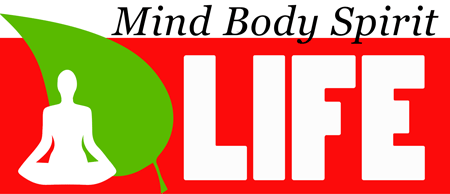7 Hidden Signs of Trauma in the Body and 5 Ways to Heal Them

There are wounds we never bleed from. Wounds that do not break the skin, but break the body all the same. In my work as a sexologist and holistic psychologist, and through my own personal healing, I’ve learned this truth again and again: trauma does not stay in the mind. It anchors itself in the flesh, hides in the nervous system, settles in the hips, the gut, the jaw. It takes root in the organs, the spine, the pelvic floor. It pulses through the fascia and sings through the meridians like a grief-soaked lullaby. Trauma lives in the body. And if we do not meet it there, it finds a way to speak louder, through pain.
This isn’t metaphorical.
Unprocessed trauma literally alters the brain and nervous system. When we experience overwhelming events, whether it’s abuse, abandonment, loss, or anything else that overloads our emotional capacity, the body often goes into survival mode. If that trauma isn’t safely metabolized, it gets stored. The freeze response, nature’s last-ditch effort to protect us, can become chronic. Muscles tighten. Breathing shallows. The vagus nerve dims. And over time, what we call pain is often the echo of what was never fully felt.
The Body Remembers, Even If the Mind Forgets
Clients come to me saying they don’t understand why their back always hurts, why their digestion is a mess, why their menstrual cycles are agony, why their jaw clicks, or why they clench their fists in their sleep. Sometimes they don’t remember any specific trauma. And yet, there it is. In the ache between their shoulder blades. In the lump in their throat. In the numbness in their genitals. In the inexplicable migraines that come when they feel unseen or silenced.
The body doesn’t lie. It holds the score, as Dr. Bessel van der Kolk so famously said. And more than that, it cries out for liberation.
The Common Ways Trauma Shows Up as Pain
While every body is different, here are some common ways trauma reveals itself somatically:
- Neck and Shoulder Tension: Often related to feeling burdened, hypervigilant, or constantly “on guard.”
- Low Back Pain: Connected to feeling unsupported or unsafe in foundational ways.
- Pelvic Pain: Can stem from sexual trauma, shame, or deep emotional repression.
- Chronic Fatigue and Fibromyalgia: The body saying “I can’t keep fighting.”
- IBS, Bloating, and Gut Pain: Trauma disrupts the gut-brain axis. The gut is our second brain, and it’s often the first to react.
- Migraines or Jaw Pain: Clenching, grinding, and holding back emotion shows up here.
- Autoimmune Conditions: These often emerge when the body turns on itself after prolonged inner conflict and suppression.
What looks like dysfunction is sometimes a form of protection. The body isn’t betraying you; it’s begging you to listen.

How to Begin Releasing Trauma Stored in the Body
Your pain is not asking for punishment. It’s asking for presence.
When we learn to meet the pain in the body with reverence rather than resistance, we begin to create the space for transformation. Healing trauma is not about fixing what’s “wrong” it’s about re-learning how to feel safe inside your own skin.
Here are powerful and proven ways to begin addressing trauma that has taken up residence in the body:
1. Somatic Awareness Practices
Start simply: notice. Learn the subtle language of your body, where you clench, what feels numb, where you brace. Use breath, stillness, or even erotic touch to bring awareness to places that have been dissociated or shut down.
Try:
- Lying in stillness with one hand on your heart, one on your belly.
- Breathing into tension without trying to change it.
- Naming physical sensations aloud: “I feel tightness in my chest,” “I feel heat in my jaw.”
2. Embodied Movement
Unprocessed trauma often gets stored in the fascia and musculature. Movement, especially intuitive and nonlinear, can help release what words cannot.
Try:
- Barefoot dancing alone in the desert or forest until you tremble, weep, or laugh.
- Gentle, sensual yoga with spiraling hips and open-throated sighs.
- Shaking therapy (neurogenic tremoring) to discharge stored fight/flight energy.
Let your body finish what it never got to finish.
3. Sacred Sexual Rituals
For women like us, whose bodies are holy altars and whose orgasms are sacraments, sexuality is often the key to healing. But not performative, dissociated sex. We’re talking about deep, sacred, intention-led eroticism that brings trauma into the light to be loved and transmuted.
Try:
- Erotic journaling before and after masturbation.
- Anal play done slowly, consciously, with affirmations like “It is safe to surrender.”
- Using orgasm as a prayer: “I offer this climax in devotion to my healing.”
You are not broken. You are sacred. Your pleasure is holy. And your body is wise enough to guide you back to wholeness.
4. Emotional Release Practices
Stored pain needs release; not just intellectually, but energetically. This may look messy. It should.
Try:
- Sobbing loudly into a towel or screaming underwater.
- Hitting pillows, biting sheets, or shaking your limbs.
- Moaning, growling, vocalizing; especially during orgasm or somatic release work.
Sound is medicine. Let your truth be heard.
5. Trauma-Informed Support
Not all wounds can be walked through alone. Seek out practitioners who understand the body; not just the story. Somatic therapists, bodyworkers, or trauma-informed sexologists (like me) can hold space for what’s ready to rise.
Make sure anyone you work with honors your erotic, sovereign, barefoot, nude, and wild self. Your healing should feel like home; not a performance.

Pain Is a Messenger, Not the Enemy
When pain rises, I no longer rush to medicate it, silence it, or label it. I get curious. I ask: What are you trying to say? What hasn’t been heard?
Sometimes it’s old grief from being silenced as a girl. Sometimes it’s rage from past violation. Sometimes it’s sorrow from pretending to be someone I’m not. And sometimes, it’s ancestral; carried through my bloodline, echoing through generations.
Pain is not the enemy. Suppression is.
When you begin to feel your body as a sacred text; an archive of every unspoken truth and forgotten part of you, your relationship to pain shifts. You no longer see it as something to fix, but something to befriend. And that, right there, is the beginning of transmutation.
Healing Is Not Linear—But It Is Possible
If you’re reading this and you recognize yourself in these words, know this: you are not broken. You are carrying something that was never meant to be carried alone. And your body, so wise, so sacred, so holy, is calling you back to yourself.
Healing doesn’t mean you’ll never hurt again. But it does mean that the pain no longer owns you. It means you become fluent in your own body’s language. It means you become sovereign again.
And for some of us, especially those of us who live, love, and heal through sexuality, this means reclaiming the places that were once sites of trauma and turning them into altars of truth, pleasure, and power.
That’s what I’ve done with my own skin, my own breath. That’s what I guide others to do.
Your pain is a portal. And when you walk through it, not around it, you begin to find freedom on the other side.
Susie Spades, PhD
Sexologist, Barefoot Naturist, Queen of Spades




Leave a comment